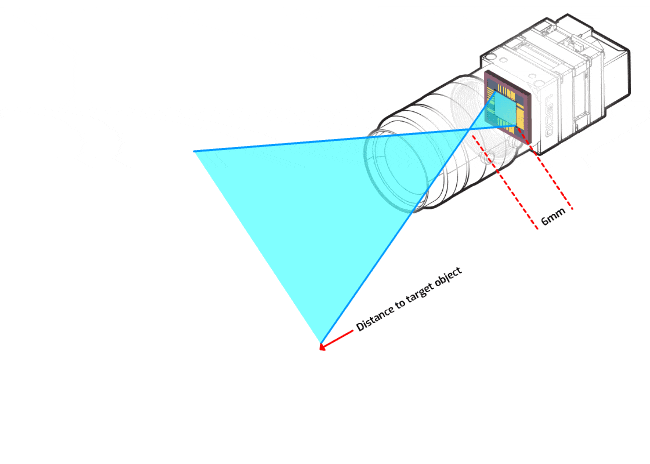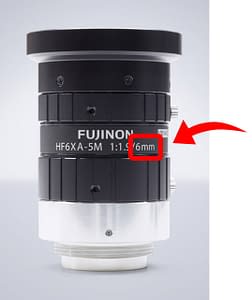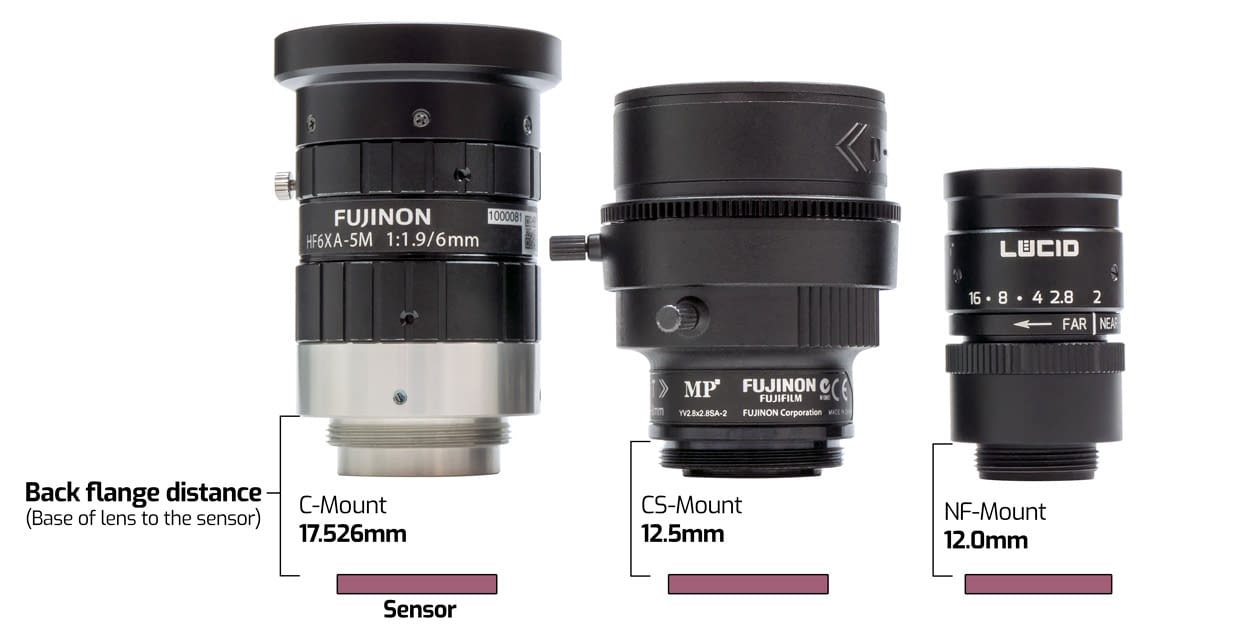Find additional information below on important lens specifications and learn how they affect application imaging.
Lens Calculator
Looking for a lens? Let us help you do the math.
Lens Calculator
Looking for a lens? Let us help you do the math.
Additional Information
Sensor Format Size
The sensor format size is shown in inches such as 1/3″, 1/2″, 1″, etc. Camera manufacturers will sometimes also list the diagonal length of the format size in millimeters. It is important to know that format sizes in inches might have different diagonal lengths depending on the sensor manufacturer. For example, a sensor manufacturer can list a 8.35mm diagonal sensor as 1/2″ while another manufacturer can list a 7.9mm diagonal sensor as 1/2″. In most cases both sensors could use the same 1/2″ lens but sometimes this might not be the case. In the above calculator we list the diagonal sensor size (mm) associated with the sensor format size (inches) of the sensors in our camera portfolio.

Examples of sensor format sizes: (left to right) 1/6″, 1/3″, 2/3″, 1″
The sensor format size is important to know because every lens is designed to focus light onto a specific sized area of the sensor. Sensor format size is also know as optical class, image circle or image sensor type. In most cases you’ll need to choose a lens that either matches your sensor format size or exceeds it. If you mistakenly use a lens that is designed for a smaller sensor format size your image would encounter lens vignetting around the edges because light is unable to reach their entire area of the sensor.

Above Left: A properly paired lens with the correct sensor format size will focus light over the entire sensor area. Right: A lens designed for a smaller sensor will not allow light to reach the outer area of the sensor.
Focal Length
A focal length of a lens is the distance in millimeters between the point of light convergence in the lens to the sensor in the camera. The shorter the focal length of the lens the wider the angle of view and the closer your target object can be. Higher focal lengths give smaller angles of view while also increasing magnification. The higher the focal length the farther your target object can be.

Above: This simplified example shows the relationship of the focal length to the angle of view and object distance

The focal length can usually be located on the label of your lens. If you do not know what focal length you need enter in the distance to your target object and the lens calculator will calculate the appropriate lens focal length.
Camera Mounts: C-Mount, CS-Mount, NF-Mount
Different machine vision cameras will have different lens mounts and you’ll need to choose a lens with a matching mount. The most common lens mounts are C- and CS-mount. The major difference between two is the back flange distance -the distance between the base of the lens that touches the lens mount on the camera to the the focal plane of the sensor. For C-mount, the back flange distance is 17.526 and for CS-mount it is 12.5mm. You can use a 5mm adapter to use a C-mount lens on a CS-mount camera but you can not use a CS-mount lens on a C-mount camera.
NF-Mount lenses offer a smaller footprint than both C-mount or CS-mount lenses. They are designed to have the same performance and functionality as regular C/CS lenses but take up less space and have less weight. The back flange distance on NF-mount is 12.0mm. It is possible to use C/CS-mount adapters with an NF-mount lens however it is important to know that larger sensors might be too big for the NF-lens and will produce strong vignetting on the image.

Above: Whether it is a fixed focal lens, varifocal lens or zoom lens, the mount type must match on both your lens and camera. This is due to different back flange distances: C-mount – 17.526mm, CS-mount – 12.5 mm, NF-mount – 12.0mm
Need additional assistance with your lens selection?
Contact us for help.
 Support Center
Support Center

